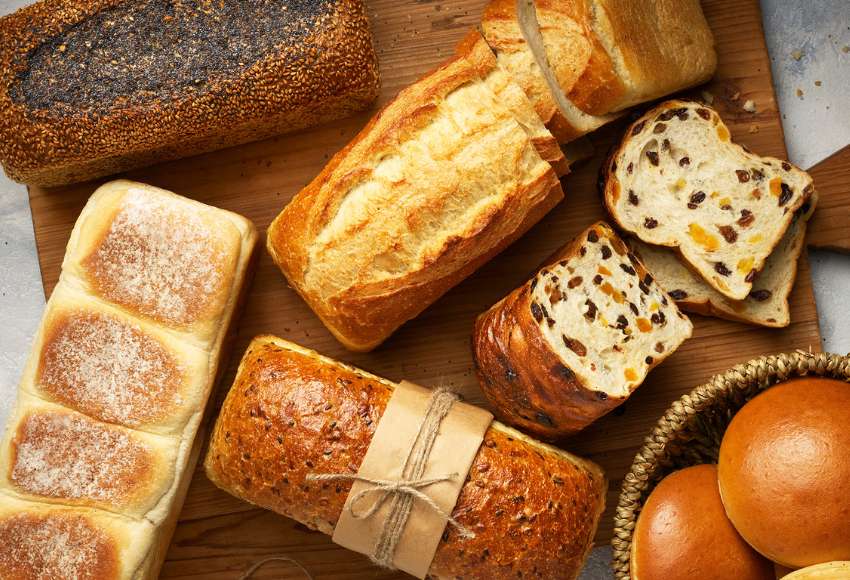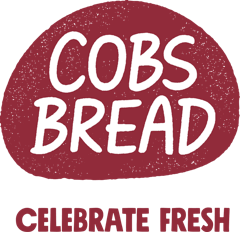A step-by-step guide to setting up your food donation program

COBS Bread and our over 160 bakeries across Canada are sharing 20 years worth of learnings, for the very first time.
This is our actual step-by-step process for setting up a food donation program. We’ve even included the templates our franchisees use for contacting charities, product donation agreements and arranging the logistics.
Now, it’s all yours.
Who this guide is for
This is for any small or medium-sized business who produces or sells food in Canada and wants to help combat food insecurity in their community and help keep food out of the landfill and get it into the hands of people who really need it.
Why donating food is important?
According to a recent survey, 52 per cent of Canadians have faced food security challenges in the past year.
Food banks and other programs serving vulnerable Canadians are expected to serve 60 per cent more people per month in 2023 than last year.
I love knowing that the products we have poured so much love into making are going to a good home every night.
– Steff Steers, Franchisee of The Boardwalk, Fairway Plaza, and Blackstone in Kitchener-Waterloo, Ontario
Supporting Food Banks and More Through Our End of Day Program
Since COBS Bread first opened in Canada in 2003, every bakery has committed to partnering and donating leftover baked-fresh daily products to local charitable organizations through COBS Bread’s End of Day Giving program.
Over $560 million worth of product has been donated to over 500 charity recipients, including food banks, school breakfast programs, after school programs and youth charities.
With $1,000 worth of product, on average, being donated each day by every franchise, this program is a cornerstone of our business, as well as one of the most important ways that we connect with our community.
Do You Have Free Food You Don’t Want to Go to Waste?
This five step guide will walk you through the following steps to setting up a food donation program.
Assess What You Can Donate. And What You Can’t.
Before you start reaching out to local charities, it’s important to consider several factors to ensure food safety, quality, and suitability for donation
For example, at COBS Bread, we don’t donate the following:
- Products with meat
- Products with cheese, cream cheese icing, or custard
- Challah, Brioche, or Gourmet (bread with eggs)
- Damaged or burned products
Here are some key considerations to help you decide what you can and should donate:
Food safety and hygiene
The primary concern is to avoid donating any food that may pose a risk to the health of the recipients. This includes checking for signs of spoilage, expiration dates, proper storage conditions, and adherence to food safety regulations. Perishable items that have not been stored correctly or have passed their expiration dates should not be donated.
Quality and freshness
Donated food should be of good quality and still have a reasonable shelf life remaining. It should be representative of the standards expected by the recipients. Food that is stale, damaged, or significantly past its prime should not be donated.
Legal restrictions
Familiarity with local regulations regarding food donations is crucial. Some jurisdictions have specific rules and guidelines for donating food, including liability protections for donors. Understanding these legal requirements ensures compliance and protects both the donor and the recipient.
Learn more about each province’s Donation of Food Act or Good Samaritan Law.
- British Columbia: Food Donor Encouragement Act
- Alberta: Charitable Donation of Food Act
- Saskatchewan: Donation Of Food Act
- Manitoba: Food Donations Act
- Ontario: Donation of Food Act
- New Brunswick: Charitable Donation of Food Act
- Nova Scotia: Volunteer Services Act
- Newfoundland: An Act Respecting the Good Faith Donation and Distribution of Food
- Northwest Territories: Donation of Food Act
- Yukon: Donation of Food Act
Find your Charitable Match
We recommend that you start by making a list of charities in your community that you’d like to support. This includes authorized shelters, food banks, school lunch programs, community programs, and more.
If you are feeling blocked, check out Canada Helps. It is a great online resource where you can search for charities in your area.
When doing your research, keep these things in mind:
- How much product can the charity take at one time?
- What kind of on-site food storage do they have?
- Does the charity’s values align with yours?
- Are they able to arrange for someone to come and pick up the food? Many communities also have organizations that will help facilitate picking up your leftover products and help direct it to charities in need. Here are some of our favourites: Loop and Zero Food Waste Canada.
Some of our franchises donate regularly to more than one charity. For example, Donna in Calgary donates left-over product to an afterschool program on Mondays and Wednesdays, and a women’s shelter on the other days.
Reaching Out and Starting a Conversation
Now it’s time to contact your preferred charities to determine their interest and their exact needs.
This first correspondence should:
- Introduce yourself and clearly state the type of food you are able to donate
and quantities. - Enquire about their preferences and dietary requirements.
For instance, if donating to a shelter or a community organization, it may be
helpful to ask about any dietary restrictions, allergies, or preferences they
have. This ensures that the donated food is suitable and can be utilized
effectively. - End with a clear call-to-action and next steps.
We find that asking for a phone conversation to be the most effective way to move this process forward and cut through the email back-and-forth. Suggesting an in-person visit is often valuable as well, so both parties can get to know one another better.
Having these conversations with your selected organizations helps you learn more about their vision, values and how the food donations could benefit the community. This ensures that the organization aligns with your business’
brand and values.
Ironing Out The Logistics
Once you and your charity are ready to move forward, the next step is to draft a Product Donation Agreement.
It’s important to include key elements to establish clear expectations and protect the interests of both parties.
You can download our printable template to help you get started and create your own, tailored Product Donation Agreement, but here are some essential components to consider including in your agreement:
- Contact Information
Include the full legal names, addresses, phone numbers, and email addresses of both your organization and the charity. - Purpose
Clearly state the purpose of the agreement, which is to establish a partnership for the regular pickup and donation of leftover food to the charity. - Scope of Donation
Specify the types of food that will be donated, including any limitations or restrictions. This can include details such as whether the donation will consist of perishable or non-perishable items, the quantity of food to be donated, and any specific dietary considerations. - Quality and Safety Standards
Outline the quality and safety standards that the donated food must meet. This may include provisions on food handling, storage, packaging, expiration dates, and compliance with relevant health and safety regulations. Emphasize the importance of providing safe and suitable food for consumption by the charity’s beneficiaries. - Donation Schedule
Define the frequency and timing of food pickups. Specify the days, times, and location where the charity will collect the donated food from your premises. It’s important to establish a mutually agreeable schedule that accommodates both parties’ needs. At COBS Bread, the charity picks up the bread, however, your organization may choose to deliver it to the recipient. - Liability and Indemnification
Clearly state the respective liabilities of each party. Specify that your organization will not be held responsible for any issues arising from the consumption of the donated food once it is in the possession of the charity. Additionally, include an indemnification clause that states the charity will hold your organization harmless against any claims or liabilities related to the donated food. - Communication and Coordination
Outline the preferred methods of communication between both parties. Include details on whom to contact in case of any changes in pickup schedules, modifications to the agreement, or any other issues that may arise. Encourage regular communication to ensure smooth coordination. - Terminal Clause
Include provisions outlining the circumstances under which either party may terminate the agreement. This could be due to changes in operational needs, non-compliance with food safety standards, or other reasons. Specify the notice period required for termination and any consequences that may arise from early termination. - Confidentiality
If necessary, include a confidentiality clause to protect any sensitive information shared between the parties during the course of the agreement. This can help maintain the privacy and integrity of both organizations. - Signatures
Provide space for authorized representatives from both organizations to sign and date the agreement, indicating their acceptance and commitment to its terms.
Let the Giving Begin
Congratulations! You have now partnered with charitable organizations and are ready to donate your leftover products to those in need.
Here are some best practices when it comes to the charity picking up the leftover product
- Know your pick-up time and location
- Volunteers can pick up after closing or, where needed, at the beginning of the next day
- Give the volunteers a set amount of time to load donations (at COBS Bread, we set this at 20 minutes).
- Volunteers must wear a hair net or head covering and disposable gloves, as required.
- Stores must be kept locked before and after pick-up
- Only authorized representatives can pick up donations
- Don’t forget to check ID!
Good luck! Happy Donating!
Download the printable version of this guide.
We’d love to hear from you. Let us know if you find this guide helpful and share with us your own success story! Please email us at [email protected].
If you’re interested in becoming part of the fastest growing bakery concept in Canada, visit our Franchising Guide to learn more.
